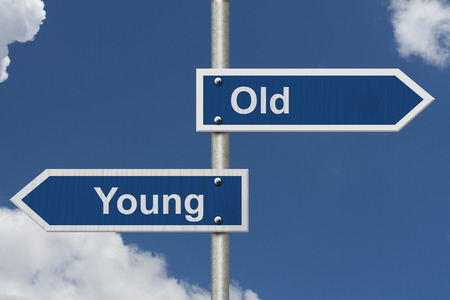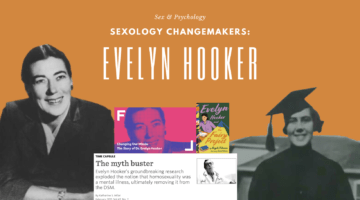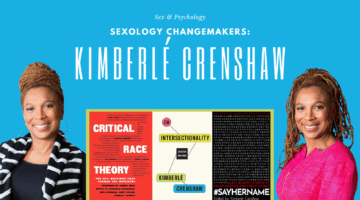Gender and Sexual Orientation Differences in Preferred Sexual Partner Age
February 15, 2017 by Justin Lehmiller
Several studies have found that men and women have different age preferences when it comes to selecting romantic and sexual partners. Generally speaking, it appears that men tend to prefer somewhat younger partners, whereas women tend to prefer partners who are somewhat older. Much of this research has been interpreted through the lens of evolutionary theory, which claims that it was adaptive for men to evolve a preference for younger women because they’re likely to be most fertile; by contrast, this theory suggests that it was adaptive for women to have evolved a preference for older men because they presumably have more status and resources.
There are several important questions to be raised about these age preferences, though. For one thing, just how stable are they across the lifespan? Might they change as we get older? Furthermore, what about persons who aren’t heterosexual? Are gay, lesbian, and bisexual persons’ partner age preferences similar or different? A new study published in the journal Evolutionary Psychology offers some insight into these questions.
In this study, a population-based sample of 2,676 adults (33% male, 67% female) aged 18-50 in Finland were surveyed about their sexual orientation as well as the age of the oldest and youngest person with whom they would consider having sex. Participants were also asked about the oldest and youngest person with whom they had actually had sex in the past 5 years, but I’m not going to focus on those findings here—if you want to learn more about them, check out the full paper, which is freely available here.
Speaking at a general level, the results replicated previous research in finding that heterosexual men tended to be more open to partners who were younger (vs. older) than they were, whereas heterosexual women tended to be more open to partners who were older (vs. younger) than they were, as you can see in the table below. This table also reveals that heterosexual men were willing to consider partners within a wider age range.

The results also indicated that our age preferences seem to change as we age, but in different ways for men and women. Specifically, although both men’s and women’s lower age limit increased as they themselves got older, the rate of this increase was more than twice as fast for women as it was for men. Because men have a lower limit to begin with compared to women, this means that, as we age, the gender difference in preferences for young partners actually seems to get even bigger.
So what about the upper age limit? The results indicated that, as people get older, the age of the oldest person they are willing to have sex with increases. However, this trend does not differ across the sexes—in other words, the rate of change in one’s willingness to have sex with older partners seems to be pretty similar for men and women.
When it came to sexual orientation, the results suggested that the overall patterns of age preferences tended to be fairly similar within a given gender group (as you can see in the table above). In other words, people of the same gender expressed fairly similar preferences regardless of their sexual orientation.
However, one important difference that did emerge is that the rate of increase in the lower preferred age limit was smaller for gay men than it was for any other gender/sexuality category. In other words, as they get older, gay men retain interest in younger partners more than anyone else.
Of course, there are a few important limitations of this study, one being that all data were collected in Finland, a country that—among other things—has more gender equality than most other industrialized nations, a factor that could potentially impact mating preferences. As such, it’s always wise to be cautious about broadly generalizing results across cultures. In addition, this study looked only at the role of age, which is just one of many, many characteristics that people might pay attention to when selecting a potential sexual partner. And, finally, the researchers asked about preferred parter age in a way that was devoid of context. This is a key point because people might have different preferred partner ages depending upon whether they’re thinking about a casual relationship or a romantic relationship.
That said, these results are important because they provide evidence that our sexual age preferences appear to change as we get older and, moreover, that the changes that occur may be different for men and women, as well as persons of different sexualities.
Want to learn more about Sex and Psychology ? Click here for previous articles or follow the blog on Facebook (facebook.com/psychologyofsex), Twitter (@JustinLehmiller), or Reddit (reddit.com/r/psychologyofsex) to receive updates.
To learn more about this research, see: Antfolk, J. (2017). Age Limits: Men’s and Women’s Youngest and Oldest Considered and Actual Sex Partners. Evolutionary Psychology.
Image Source: 123RF.com/Karen Roach
You Might Also Like:

Dr. Justin Lehmiller
Founder & Owner of Sex and PsychologyDr. Justin Lehmiller is a social psychologist and Research Fellow at The Kinsey Institute. He runs the Sex and Psychology blog and podcast and is author of the popular book Tell Me What You Want. Dr. Lehmiller is an award-winning educator, and a prolific researcher who has published more than 50 academic works.
Read full bio >


